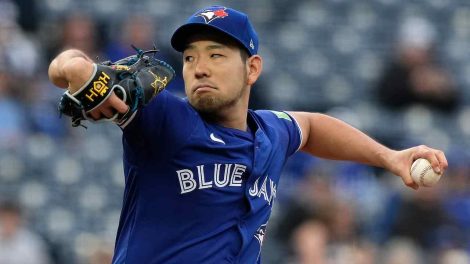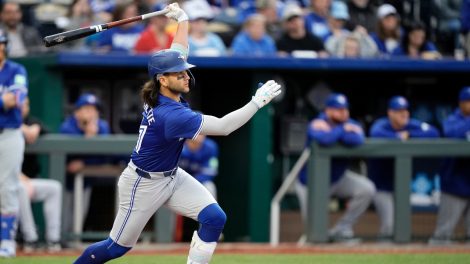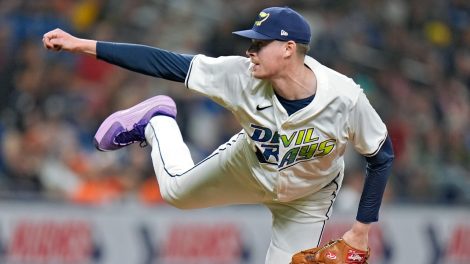Brodie Van Wagenen’s critique of MLB owners was the talk of baseball Friday, and understandably so. Not only did he suggest that owners could be working together to keep free agent prices down, he invoked the 1994 strike and suggested players are “willing to bleed” for meaningful change.
“Bottom line, the players are upset,” wrote Van Wagenen, a co-head of CAA baseball. “No, they are outraged.”
Oh, and he suggested a spring training boycott might be a good place to start.
“There is a rising tide among players for radical change,” he wrote. “A fight is brewing.”
Words that strong make the baseball industry take note. Many agents agreed with the statement and felt it gave voice to their own concerns.
“He’s (expletive) bang on,” wrote one agent.
There’s no debating that many players are frustrated and you’d be hard pressed to find an agent who doesn’t find this market concerning. At the same time, others I spoke with Friday argued that this bizarre and slow-developing market couldn’t satisfactorily be explained by hinting at collusion.
So why are so many prominent free agents still unsigned with less than two weeks remaining before spring training? One agent suggested that the logjam will break once top players like J.D. Martinez, Eric Hosmer, Mike Moustakas, Jake Arrieta and Yu Darvish sign. For now, teams are still zeroed in on their top targets. That’ll change once they’re no longer available.
“We saw what happens when a segment of the free agent class goes off the board,” the agent said. “There was a feeding frenzy on relievers.”
To be fair, that argument doesn’t explain the availability of 100-plus free agents, but it undoubtedly applies to the likes of Alex Cobb and Lance Lynn.
There’s also the fact that many of the top remaining players—Martinez, Hosmer, Moustakas, Arrieta and Greg Holland among them—are clients of Scott Boras. Some observers suggest Boras has substantial offers available, perhaps in excess of $140 million for Hosmer, but continues to wait in the hopes that better ones will emerge. Along those lines, Yu Darvish continues to wait in case the Dodgers can clear enough payroll to avoid paying competitive balance tax penalties, according to Andy McCullough of the Los Angeles Times.
In Los Angeles and New York, baseball’s biggest-market teams are now curbing their spending to the dismay of many on the player side. Big-picture, the new collective bargaining agreement shifted power from the players to the owners when it was signed last winter. While the players bargained for lifestyle fixes like extra space on team buses, MLB did a more thorough job of anticipating the consequences of their economic decisions. Simply put, people respond to incentives, and the CBT incentivizes teams not to spend. MLB negotiators appear to have anticipated that better than their counterparts.
The one segment of free agency that has moved is the relief market, where 24 players have landed multi-year deals worth more than $340 million combined. Two of the more prominent relievers remaining, Greg Holland and Tony Watson, are both Boras clients and may simply be waiting with offers in hand.
Still, other free agents have no doubt been frozen out. Younger players are considered more valuable now that teams weigh the importance of defence and baserunning more heavily, and older free agents are less appealing to teams by comparison.
MLBPA executive director Tony Clark issued a statement of his own Friday, calling free agency the cornerstone of baseball’s economic system but stopping short of accusing the owners.
“Each time (free agency) has been attacked, players, their representatives and the association have united to defend it,” Clark said. “That will never change.”
Generally speaking the MLBPA has remained quiet throughout the off-season. Depending on your perspective, Van Wagenen’s comments could be interpreted as the perfect rallying cry for the players or a subtle jab at the union (meanwhile, the strongly-worded comments would also have reminded CAA clients including Andrew Cashner, Todd Frazier, Jon Jay and Jason Vargas that their agency has their back).
Lastly, and most importantly, there’s the possibility Van Wagenen hinted at: could MLB owners be colluding? They’ve done it before, so to rule the out possibility would be to ignore baseball history. And do they sip scotch together and talk about how players make too much? You have to believe they do. But is there a Google Doc somewhere out there tracking offers for all 30 GMs? No chance, at least according to the people I asked. Brandon Moss appeared to share that view when asked about baseball’s changing economics on MLB Network Wednesday.
“Everybody wants to look up and scream collusion,” Moss said. “Sooner or later, you have to take responsibility for a system you created for yourself. It’s our fault.”
All told it’s legitimately concerning. The CBT discourages teams from spending. Many players are frustrated and some, like Kenley Jansen, are talking openly about the possibility of a strike.
Regardless of who’s to blame for this current off-season, there’s a bigger question in play, one that Van Wagenen points to in his statement. Given the imbalance of power in the current CBA, when and how will players demand change?
“They are willing to sweat for it,” Van Wagenen wrote. “They are willing to sacrifice for it; they are willing to cry for it; and most importantly, they are willing to bleed for it.”
[relatedlinks]









